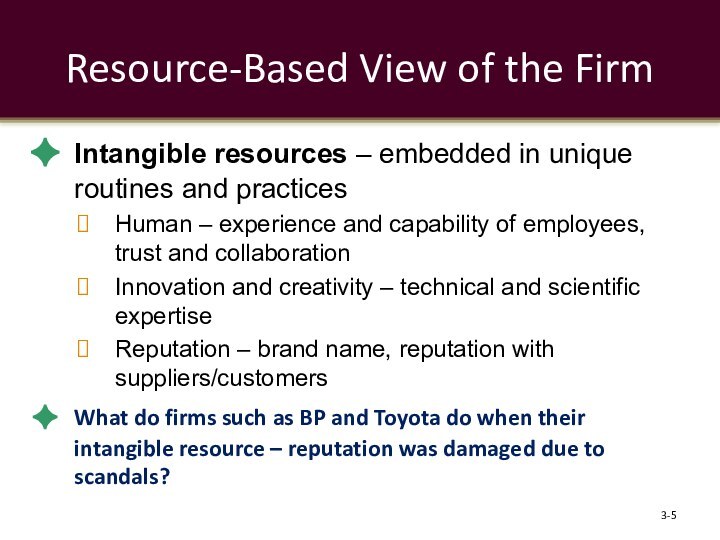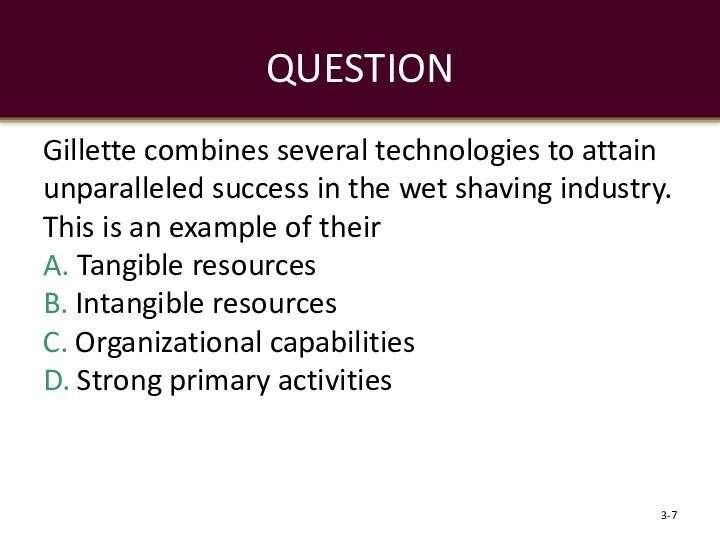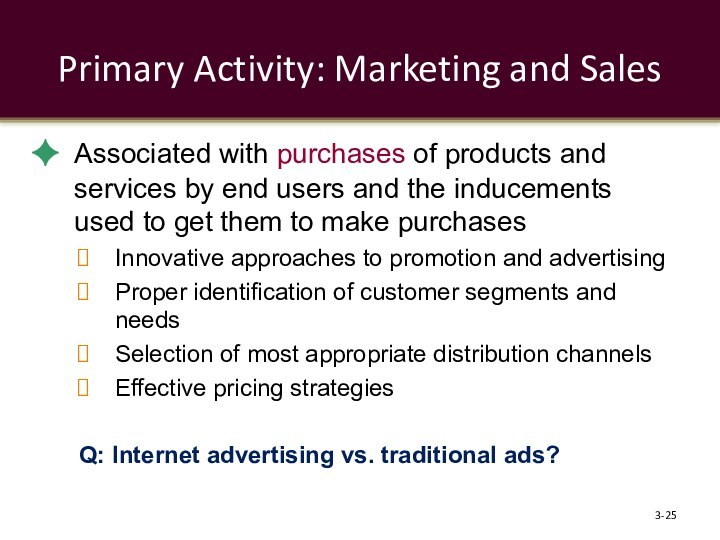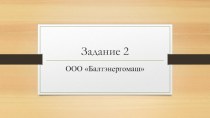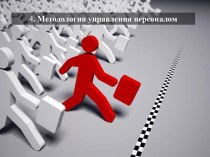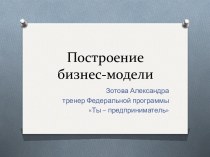others?
Endowment of strategic resources that are valuable, rare, costly
to imitate, and costly to substitute.Determine the resources and capabilities that are likely sources of competitive advantage (internal and external focus)
Three key types of resources: Tangible, Intangible, and Organizational Capabilities
Central theme – competitive advantages are created and sustained through the bundling of several of these resources to unique combinations
3-




